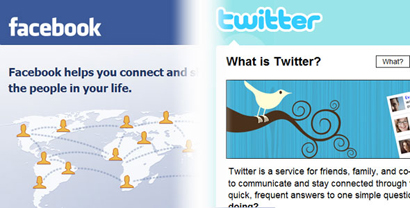 It’s official. Social networking is here to stay.
It’s official. Social networking is here to stay.
Forget using it just as a business tool. It’s everywhere. You can’t get away from it. (And we’re not even talking about, ahem, inappropriate uses of it such as sending nasty pictures of yourself over Twitter when you really ought to know better)
Anyway, I digress. The point is social networking is so prolific and so everywhere that websites and blogs are starting to look like something your grandpa used to market himself. After all, now you have gurus proclaiming Facebook fan pages are the absolute MUST HAVE little black dress and you are seriously behind the times without one. (Here’s an example of a fan page if you want to check it out: http://www.facebook.com/michelepwkaching — feel free to “like” it once you’re there too. J )
So are websites and blogs even worth it? Should we just throw all our chips in the social networking pile and not spend any more time or money on websites or blogs? And what if you don’t have a website yet — should you even bother?
Okay. Let’s all take a deep breath here. Feel better? Good — now let’s look at the facts.
Social networking is still in its infancy. I know, I know. It feels like it’s a rebellious teenager. But honestly — this is still very, very new. It’s really only seriously caught on in the past few years. And let’s look at what happened during those few years:
* MySpace was THE place to be if you were an entrepreneur (Does anyone else even remember MySpace? Anyone?) Facebook was this weird, red-headed stepchild. In fact, when I first opened an account, when you sent out a friend request, you had to indicate how you knew the person and one of the options was (I kid you not) “hooked up.” Yeah. I think there was only one option, something like “know from a group or an association” that was safe for business purposes. Linked In was basically for “corporate only” or if you were looking for an actual job (I had an account and I really had no clue what to do with it.) Twitter was still being programmed in someone’s basement.
To put this into perspective — this was 4 years ago.
* Then came the huge “MySpace migration into Facebook” revolution. Everyone was on Facebook. MySpace was SO last year.
* Then Twitter exploded onto the scene. EVERYONE was on Twitter. And a bunch of other social networking platforms suddenly popped up out of nowhere — plurek, plaxo, etc. Suddenly there were HUNDREDS. Yee gads.
Fast forward to today. Twitter is declining in popularity as a tool to grow your business. (Although it remains tops on the list as the best tool to embarrass yourself.) Facebook is back on top. Linked In has rediscovered a new surge of popularity — thanks to never getting away from its roots (keeping it a more formal platform, which serves its core customers) but still adding new bells and whistles (like groups). Many of those other social networking platforms have fallen by the wayside.
And what will the future look like? Who knows? I certainly don’t. For all I know, Facebook fan pages could be as popular as yesterday’s newspaper — heck, Facebook could be as popular as yesterday’s newspaper. MySpace could be back on top and something called “Yowzer” could be the hottest thing.
Which is why those old-fashioned websites and blogs still have a place in your marketing.
You see, you control your websites and blogs. You’re not subject to whims of playing in “someone else’s sandbox.” You don’t have to worry if the rules change, if Twitter decides it doesn’t like your picture and shuts your profile down or whatever. You have your own online real estate that you can do what you want to with it.
So the question is — do you want to have control over your business, your message, your visibility? Do you want to have a hub for your online activities — your “online home” to invite your ideal clients to if they want to learn more about what you do?
Or not?



